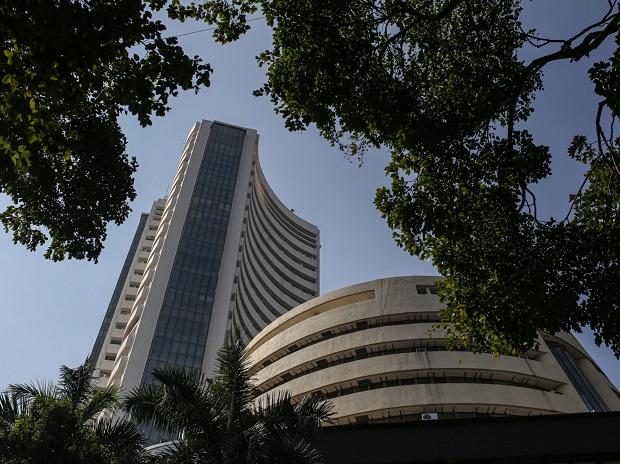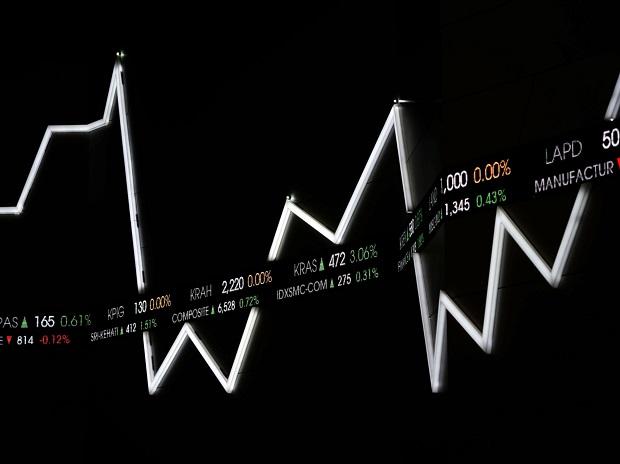Domestic markets extended their losses as rising US Treasury yields continued to unnerve investors and triggered concerns of asset repricing. After slipping to a low of 64,879, the benchmark S&P BSE Sensex finished at 65,226, down 286 points, or 0.44 per cent. This marked the lowest close for the 30-share index since August 31.
The National Stock Exchange Nifty50 fell 0.47 per cent, or 93 points, closing at 19,436, its lowest level since September 1.

The yield on the 10-year German Bund also exceeded 3 per cent for the first time since 2011.
Investors feared that the rising yields could exacerbate the selling by foreign portfolio investors.
Last month, they withdrew nearly $2 billion from domestic stocks, the most significant outflow since January.
As yields rise, the risk/reward ratio for investing in equities becomes less attractive.
From their peaks of 67,839 and 20,192 on September 15, the Sensex and the Nifty are now down nearly 4 per cent.
The rise in bond yields has further strengthened expectations of a rate hike this year by the US Federal Reserve (Fed), souring the appetite for risk assets.
Additionally, there was some caution ahead of the monetary policy announcement by the Reserve Bank of India on Friday.
The latest surge in bond yields was fuelled by better-than-expected US job data this week, as well as a series of hawkish comments from Fed officials.
Unexpectedly, job openings in the US rose in August due to an increase in white-collar job postings, highlighting the resilience of labour demand.
The number of available positions rose to 9.61 million in August from a revised 8.92 million in July, as shown in the Bureau of Labor Statistics’ Job Openings and Labor Turnover Survey (JOLTS) released on Tuesday.
Analysts believe the JOLTS data indicates a still-tight labour market that could compel the Fed to raise interest rates next month.
“We expect market weakness to persist in the coming weeks until the headwinds recede. The second-quarter earnings season will start next week and is expected to maintain the growth momentum of previous quarters. Even the pre-quarterly updates released so far indicate healthy traction. Market direction going ahead will depend on the combination of global/local macros and earnings delivery, along with management outlook,” said Siddhartha Khemka, head of retail research at Motilal Oswal.
Cleveland Fed President Loretta Mester stressed the need to raise rates one more time this year and maintain them at higher levels to achieve the Fed’s inflation target of 2 per cent. Meanwhile, on Monday, Fed Governor Michelle Bowman said multiple interest rate hikes may be required to get inflation back on track. Bowman also pointed out that high energy prices could reverse the Fed’s progress concerning inflation.
“We expect this earnings season to be of high importance as commentary from management would be key, especially with regard to demand and margin outlook as raw material prices increase driven by an increase in crude prices,” said Jaykrishna Gandhi, head of business development at Emkay Institutional Equities.
“While there is no reason to panic about the structure of the Indian markets, some caution is warranted in the near term. The yields on the US 10-year Treasuries are nearing 5 per cent, which will drive further outflows from the emerging markets,” he added.
The market breadth was weak, with 2,446 stocks declining and 1,250 advancing on BSE. More than two-thirds of Sensex stocks declined.
Axis Bank, which fell 4.4 per cent, was the worst-performing Sensex stock and contributed the most to the index’s decline.
HDFC Bank shares rose 1.5 per cent, helping offset some of the losses for the benchmark indices.
Note:- (Not all news on the site expresses the point of view of the site, but we transmit this news automatically and translate it through programmatic technology on the site and not from a human editor. The content is auto-generated from a syndicated feed.))



